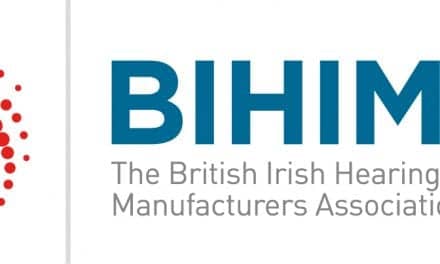Phonak ABCs of eAudiology #9: 10 Steps to Family-centered Care for eAudiology
The Phonak ABCs of eAudiology is a handbook of step-by-step guides for incorporating eAudiology and Phonak eSolutions into daily hearing care practice. Each guide has been written by a renowned international expert in this field. A comprehensive range of considerations have been broken down into easy-to-follow steps towards practice implementation. Following the 10 steps in this series of implementation guides could see hearing care professionals up and running with eAudiology services in your practice very soon, benefiting from improved workflows and cost savings, providing your clients quality care in a way which is most convenient to them.
Family-centered care (FCC) and eAudiology are the perfect match. We already know evidence has shown that outcomes improve when family members are involved with hearing health-related services. Therefore, since eAudiology efforts are increasing rapidly throughout the fields of audiology and hearing instrument industries, would it not then seem logical that a combination of both these offerings would best serve our patients with hearing loss? The widespread availability of eAudiology technologies makes the inclusion of family in all aspects of the auditory rehabilitation process a present reality.
It is simple, it does not require advanced technological skill, it is commonly accessible, and it makes sense.
Here are 10 steps to get you started on the road to implementing FCC in your practice using everyday technology systems.
Where to start?
Step 1 –
Buy-in
Develop an FCC philosophy within your practice. Get everyone involved in the process—all professional and clerical staff. Once you get buy-in from your employees, the rest is easy.
Step 2 – Get Equipped
It is likely that your practice already has the necessary equipment to begin the FCC/eAudiology process. Hearing aid manufacturers now provide products and services to connect with your patients remotely. Typically however, these services can be set up using standard Wi-Fi or mobile data with smartphones, tablets, or computers using already available software such as FaceTime, WhatsApp, and Skype, even without the need for complex Information Technology (IT) intervention.
Step 3 – Make the Appointment
When scheduling appointments, have your staff encourage the patient to invite family to attend. Let them explain the benefit of having family involved in the process. Be ready to provide solutions when the patient identifies problems such as: My son works and cannot attend the appointment; my daughter lives two hours away; my husband is out of town.
Step 4 – Ask the Patient Who They Would Like to Participate
If the patient is agreeable to including family into their audiology appointments, find out who they would like to bring. Will they be able to attend in person? If not, suggest that virtual attendance is possible.
Step 5 – Explain Virtual Family Participation
Let your patient know that if their family member is able to use a smartphone or tablet, they can be invited to attend the session and be present using readily available software programs. Be ready to explain the process.
Step 6 – Get Family Contact Information
Ask your patients to provide the names and contact information for the people they would like to include in their appointment.
Step 7 – Contact the Family Members or Friends Suggested by the Patient
Contact the person/persons recommended by your patient and explain the importance of FCC, inviting them to participate in the appointment. Try to arrange an appointment time that will be as inclusive as possible.
Step 8 – Determine the Family/Friend’s Preferred Method of Video Conferencing
Ask what software they have accessible, type of mobile phone (Apple/Android), comfort with the technology, and alternative means of contacting them, should any problems arise. If video conferencing is not possible, the use of a speakerphone can still include them in the process.
Step 9 – Prepare the Room
Set up the appointment room in a comfortable manner allowing for easy communication (perhaps around a circular table) and easy viewing of the video source. Try to arrange viewing of as many people as possible in the room.
Step 10 – Greet Your Patient and Welcome Them and the Family into the Appointment.
Once your patient has arrived, telephone the virtual family member to confirm their availability. Welcome your patient, escort them to the office, contact the family, allow for greetings and introductions, and begin you auditory rehabilitation.
To download a PDF of the article, please click here: 10 Steps to Family-centered Care for eAudiology
Are you up to the challenge?
If you follow these 10 simple steps, you could be providing FCC and eAudiology services tomorrow. So, try it. Undoubtedly, you already have the technology and the software is likely an app already on your phone or tablet. So, arrange for an office meeting today and get your staff on board. Schedule your first FCC consult and you will quickly realize the benefit for your patients, your practice, and yourself.
Other Articles in the Phonak ABCs of eAudiology series below:
| 1. | Licensure and Stakeholder Support | William Campbell |
| 2. | Optimizing Your eAudiology Environment | Danielle Glista, PhD |
| 3. | Clinical Applications and Feedback Provision | Gurjit Singh, PhD |
| 4. | Employee Training | Karen Muñoz, EdD |
| 5. | Scheduling and Reimbursement | Rachel Higginbotham, AuD |
| 6. | Technology and Connectivity | Jean Anne Schnittker, AuD |
| 7. | Talking to Clients about eAudiology | Gina Angley, AuD |
| 8. | Client Selection and Other Considerations | Evelyn Davies-Venn, PhD |
| 9. | Family-centered Care and eAudiology | Joseph Montano, EdD |
| 10. | Record Keeping and Data Protection | William Campbell |

is an Associate Professor of Audiology in Clinical Otolaryngology and Director of Hearing and Speech at Weill Cornell Medical College, New York Presbyterian Hospital. He received his EdD in audiology from Teacher’s College Columbia University, and his MA degree from New York University. Dr Montano is licensed by the State of New York to practice audiology and certified (CCC-A) through the American Speech-Language-Hearing Association (ASHA). He currently serves as the Vice President of Standard and Ethics in Audiology for ASHA and has been a Past-President of the Academy of Rehabilitative Audiology and the New York State Speech-Language-Hearing Association (NYSSLHA). Dr Montano is an Adjunct Professor of Audiology for City University of New York (CUNY) and Montclair State University and currently serves on the Advisory Boards of the Hearing Rehabilitation Foundation (HRF) and Hearing Education and Awareness for Rockers (H.E.A.R).





